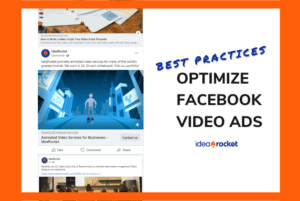Marketing is always evolving. As soon as a marketing method gains general acceptance, marketers look for ways to improve it. Dynamic video content is the result of that unending search for higher engagement, better results, and more robust performance.
In the last couple of years, video has emerged as the Swiss army knife of the marketing toolbox. It does pretty much everything and makes most jobs at least a little bit easier. Marketers have figured out how long videos should be, what to focus on, and how to share them with their audience. It might seem like there are no improvements left to make to the multi-tool that is video marketing. But marketers are just getting started.
Now a simple video just won’t cut it. Dynamic video is the new darling of the marketing world. But what is it? And how can your businesses use it to its best advantage?
What Is Dynamic Video?
Dynamic is one of those adjectives that’s so overused as to be almost meaningless. Batman and Robin are the Dynamic Duo. Some airlines are introducing dynamic pricing. Football players are described as dynamic playmakers.

Although the dictionary definition implies change and energy, the business world often uses it as a blanket positive adjective. We’ve all heard the phrases “dynamic marketing solution” or “a dynamic strategy.” The implication being that the solution or the strategy is a powerful one.
In the case of dynamic video, the term is a literal description of how these videos work. Dynamic video content changes according to who is watching the video. You’ve probably seen videos like this on social media.
Facebook often creates dynamic videos for their users. These animated videos showcase pictures of you and a friend to celebrate a “Friendiversary.” Of course, Facebook isn’t creating a truly unique video for each of its 2.38 billion active users. The time and expense required makes such an approach impossible.
Instead, Facebook created a handful of dynamic videos–animations with bits of code in them to pull images from a database. The animation remains the same for each video, but the pictures change to showcase images from your wall. Which is why these types of videos are sometimes called personalized videos.
Need another example? Way back in 2015, Nike used dynamic video to create customized videos for more than 100,000 Nike+ Users.
In the video above, Nike used totals from all Nike+ users. But in the customized videos, individual user data was displayed. Users were encouraged to share their videos on social media. And they did, because the video wasn’t about Nike, it was about the user.
Think of dynamic video content as a choose-your-own-adventure story. Except data makes the choices instead of the viewer. This brings up an important point.
It’s easy to confuse dynamic video content with interactive videos. An interactive video encourages the user to click or otherwise physically engage with the video to change the outcome. Whereas the changes in a dynamic video or personalized video are pre-programmed. The user doesn’t have to do anything. They just watch the video and see content that is specifically relevant to them.
Why Create Dynamic Video Content?
The theory is that dynamic video content can boost engagement. Which would you rather watch, a generic video about a product, or one that calls you by name and answers your specific question?
Right.
Dynamic video changes video from a broadcast into a conversation. At least, that’s the goal. When a consumer watches a dynamic video, they feel like you’ve created the content specifically for them. It makes them feel valued and strengthens their relationship with your brand.
The irony is this feeling of personal human connection is created by data. Facebook uses dynamic video effectively because they have a huge volume of user data to pull from.
You may not have Facebook’s formidable resources, but you can still create compelling dynamic video content to delight and inform your viewers.
How To Use Dynamic Video
As dynamic video has grown in popularity, services have popped up to help you make dynamic videos. If you or someone on your team knows enough code, you may even be able to create one for yourself. If you don’t know database administration and Javascript coding, a single blog post can’t teach you everything you need. So let’s focus instead on how to use dynamic video as part of your marketing strategy.
The simplest dynamic videos might just add the user’s name to key scenes in the video. In the 21st Century ad above, the first few frames call the viewer by name and include what appears to be a profile picture. But if you have more information about your customers you can do more. A lot more. For example:
You might have two different voice over tracks. One plays for users in California while a slightly altered track plays for users in Nevada.
Or you might include a map image that adjusts to match the city that the customer is watching from.
Or, you could present a different CTA at the end of the video based on browser search history.
The options are so numerous as to be almost overwhelming. But don’t lose focus. Remember that regardless of how much cutting edge technology you pour into your video, the content should still be the heart of it. If you don’t have an engaging video with a clear message, you’re audience will tune out, even if you do call them by name.
The technology is just there to help you capture viewer attention. If you don’t then deliver useful, interesting, or entertaining message, it won’t matter how cutting edge your video is. Start with the message and build out from there.
For help creating a compelling explainer video or other video content, contact Idea Rocket. Our video experts work at the cutting edge of technology to create videos that entertain, engage, and convert your audience.




